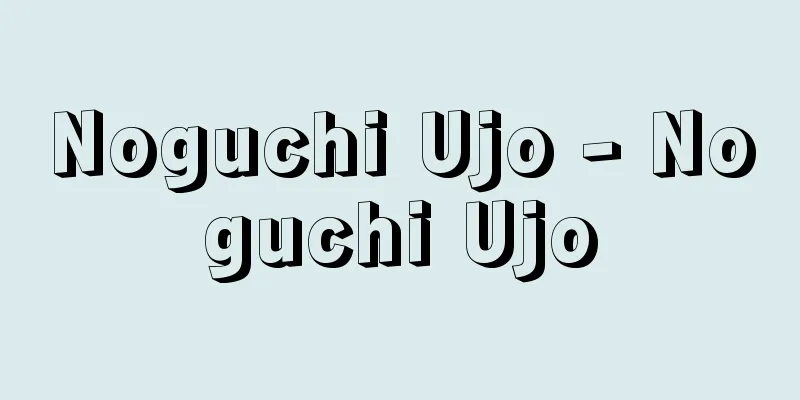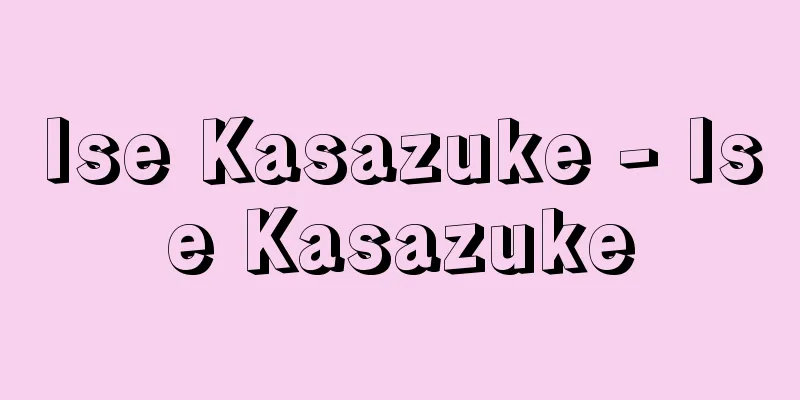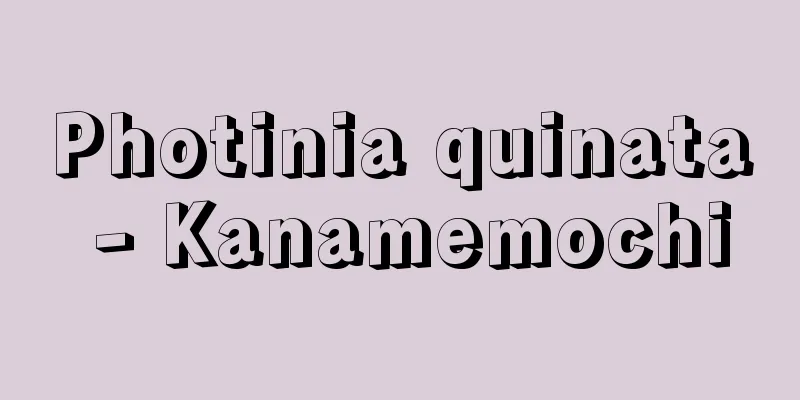Noguchi Ujo - Noguchi Ujo

|
Poet. Real name Eikichi. Born in Isohara, Ibaraki Prefecture. Dropped out of Tokyo Senmon Gakko (now Waseda University). Published in 1905 (Meiji 38), "Karekusa" (Dry Grass) was the first collection of original folk songs in Japan. He wrote many regional folk songs, including "Sendo Kouta" and "Habu no Minato," and was a popular folk poet from the end of the Taisho period to the beginning of the Showa period, mainly in collaboration with composer Nakayama Shinpei. In 1920 (Taisho 9), he moved to Tokyo and wrote children's songs, mainly for children's magazines "Kin no Fune" and "Kin no Hoshi." With songs by Motoori Nagayo and Nakayama Shinpei, he became a mainstay of the children's song movement alongside Kitahara Hakushu and Saijo Yaso. He died on January 27, 1945, at the foot of Mt. Haguro on the outskirts of Utsunomiya, where he had been evacuated. His works include the folk song collections "Betsugo" (1921), "Ujo Folk Songs: One Hundred Volumes" (1924), and children's song collections "Jugoya Otsuki-san" (1921) and "Aoi Me no Ningyo" (1924). The Noguchi Ujo Memorial Museum is located in Kitaibaraki City. [Keiichi Fujita] "Noguchi Ujo Poetry Collection" (1976, Yayoi Shobo)" ▽ "Noguchi Ujo Children's Song Collection" (1976, Yayoi Shobo) ▽ "The Definitive Collection of Noguchi Ujo, 8 Volumes (1985-87, Miraisha)" ▽ "Saito Sajiro and others, 'The Story of Noguchi Ujo Written by Everyone' (1973, Kin no Hoshi Sha)" ©Shogakukan Library "> Noguchi Ujo Kitaibaraki City, Ibaraki Prefecture ©Yuya Fujino "> Birthplace of Ujo Noguchi Kitaibaraki City, Ibaraki Prefecture ©Seishohmaru "> Noguchi Ujo Memorial Museum Source: Shogakukan Encyclopedia Nipponica About Encyclopedia Nipponica Information | Legend |
|
詩人。本名英吉。茨城県磯原(いそはら)に生まれる。東京専門学校(現早稲田(わせだ)大学)中退。1905年(明治38)刊の『枯草(かれくさ)』は日本で初めての創作民謡集。『船頭小唄(せんどうこうた)』『波浮(はぶ)の港』をはじめ地方民謡も数多くつくり、主として作曲の中山晋平(なかやましんぺい)と組み、大正末から昭和初頭にかけて民謡詩人として人気の中心にあった。1920年(大正9)上京、児童雑誌『金の船』『金の星』を中心に童謡をつくり、本居長世(もとおりながよ)・中山晋平の曲で、北原白秋(きたはらはくしゅう)、西条八十(さいじょうやそ)と並んで童謡運動の主柱をなした。昭和20年1月27日、疎開先の宇都宮郊外羽黒山麓(はぐろさんろく)で死去。民謡集『別後(べつご)』(1921)、『雨情民謡百篇(うじょうみんようひゃっぺん)』(1924)、童謡集『十五夜お月さん』(1921)、『青い眼(め)の人形』(1924)など。北茨城市に野口雨情記念館がある。 [藤田圭雄] 『『野口雨情詩集』(1976・弥生書房)』▽『『野口雨情童謡集』(1976・弥生書房)』▽『『定本 野口雨情』全8巻(1985~87・未来社)』▽『斎藤佐次郎他著『みんなで書いた野口雨情伝』(1973・金の星社)』 ©小学館ライブラリー"> 野口雨情 茨城県北茨城市©藤野優哉"> 野口雨情生家 茨城県北茨城市©Seishohmaru"> 野口雨情記念館 出典 小学館 日本大百科全書(ニッポニカ)日本大百科全書(ニッポニカ)について 情報 | 凡例 |
Recommend
Revolutionary dictatorship (English spelling) Revolutionsdiktatur
It is a transitional dictatorship that takes place...
Yuichi Takahashi
A representative Western-style painter in the ear...
Staff
In this period, the conservatives who remained in...
Skopje
…Capital of the Republic of Macedonia. Serbian na...
"Okuni and Gohei" - Okuni and Gohei
...The cast includes Morita Kan'ya 13th as Ob...
Planchon, Roger
Born: September 12, 1931, Saint-Chamond [Died] May...
Thread - Itome
〘noun〙① A thin line like a thread. ※The Seventy-fi...
Sharia
Islamic religious law. It is translated as "I...
Tendai sect
It is a representative sect in Chinese and Japane...
Acute prurigo - prurigo
...The lesions are mainly papules or urticarial p...
Dong-chang; Tung-chang
An intelligence agency under the direct control of...
Arbitration - Arbitration
The term "arbitration" is generally use...
Reply letter - hentosho
A written reply by the defendant (opponent) in civ...
Drug rash
What kind of disease is it? ●Main symptoms and pro...
Hemipsocus chloroticus (English spelling) Hemipsocus chloroticus
...Their wings are membranous and have few veins....









